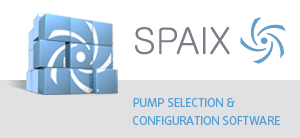Many Double Digit Growth Niches in the Water/Wastewater Treatment and Control Market
The market for treating and controlling fluids (water, petroleum liquids, wastewater and slurries) was $232 billion in 2012. It is growing at 5 percent per year prior to adjustment for inflation but there are portions which are growing at double digit rates.

Water/Wastewater/Fluid Treatment and Control Market 2012 ($ Billions) (Image: McIlvaine)
This is the conclusion reached by McIlvaine through extraction of forecasts from a number of the market reports it publishes.
One double digit growth segment in “flow” is “smart valves.” Technology offered by the valve manufacturer to report and analyze performance and maintenance data is a rapidly growing revenue segment.
There are a number of segments within the treatment which are yielding double digit growth. Ballast water treatment is one. Seventy thousand ships will have to spend more than $1 million each to filter and disinfect discharge water.
Recirculating Aquaculture Systems (RAS) are the newest form of fish farming production system. RAS are typically an indoor system that allows for farmers to control environmental conditions year round. While the costs associated with constructing a RAS are typically higher than either pond or cage culture, if the system is managed properly to produce fish on a year round basis, the economic returns can make it worth the increased investment. Treatment of the recirculating water along with regulation of oxygen is a double digit growth market.
RAS can also be located at existing power plants and take advantage of waste steam. This further reduces costs of fish production. Combining water treatment and power is a double digit growth category because of many opportunities beyond RAS.
One opportunity is co-location of sewage treatment and power plants. Through the technique of sewer mining, the power plant processes the sewage passing nearby the plant. The waste heat dries the sludge which is then burned in the power plant. The treated wastewater is used for power plant cooling and boiler feed water.
下水道矿业也growing at double digit rates in the form of satellite treatment plants. With the advent of membrane bio-reactors (MBR), it is possible to economically purify the wastewater generated by a distant new sub-division. This lessens the burden on the central plant and eliminates the transport system cost otherwise incurred.
Another growth segment is the automation of pollutant monitoring at municipal wastewater plants. Systems continually measuring as many as twenty different pollutants allow more efficient operation of the plant, lower pollutant discharges, less chemical consumption and more accurate reporting.
Source:The McIlvaine Company



